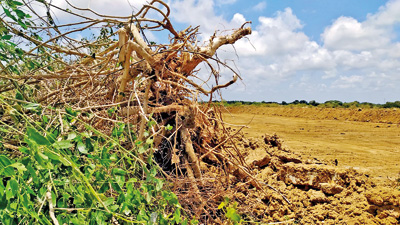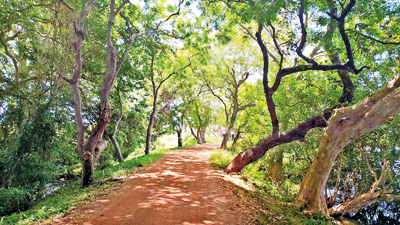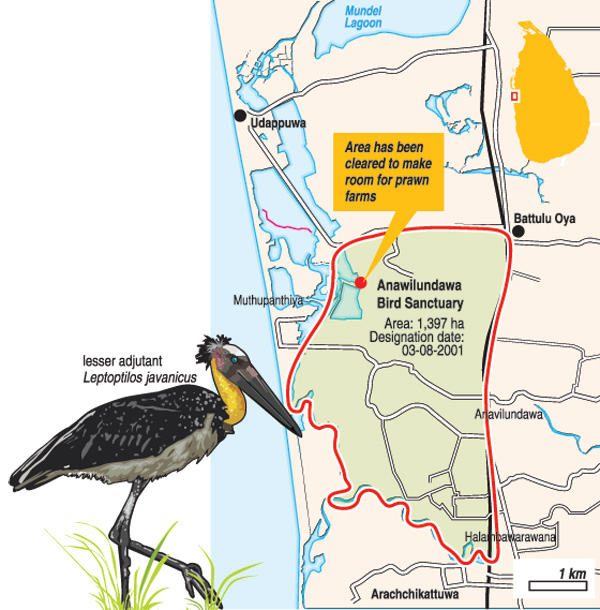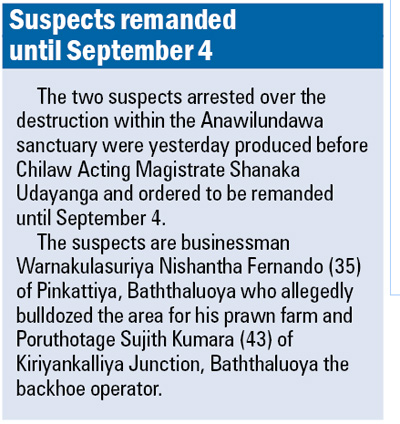News
Wetlands again ravaged for illegal prawn farming
The wildlife department has instructed its office in Puttalam to once again restore almost two acres of mangroves in the Anawilundawa sanctuary that had been illegally cleared overnight on Tuesday to make way for a prawn farm.

Wildlife Department officers say they will lose no time in repairing the two acres again damaged. Pix by Hiran Priyankara Jayasinghe
Anawilundawa is a Ramsar wetland falling deemed of international importance under the UNESCO Ramsar Convention. Six out of 2,331 Ramsar wetlands worldwide are in Sri Lanka according to a 2018 report, and Anawilundawa is one of them.
A 35-year-old prawn farmer from Udappuwa has been arrested for his suspected involvement in the illegal activity at Anawilundawa.
The government will punish the perpetrators “to the fullest extent of the law, regardless of the sort of power the guilty parties will attempt to throw around,” Wildlife and Forest Conservation Minister C.B. Ratnayake said.
Department of Wildlife Conservation (DWC), Officials who found the illegally cleared area on Wednesday morning had been told curtly that it had been done with the permission of “the minister”.
The DWC said legal action was underway in the Chilaw Magistrate’s Court. Police are searching for more suspects and the heavy machines used in the rapid operation. A driver is also under arrest and a backhoe confiscated.
Officials said they had found old prawn tanks had been cleaned in readiness to restart the farm.
There had been prawn farms in the area around two decades ago but these had been shut down. For the past two years, the DWC has been working on the restoration of some 20 hectares of abandoned prawn farms in the Anawilundawa sanctuary to return the wetlands to their former state.
Department officers say they will lose no time in repairing the two acres again damaged. “We received orders from Colombo to restart the restoration process of the mangroves now,” WCD Assistant Director in Puttalam Eranda Gamage said. “It will begin again.”
The Ramsar area of Anawilundawa is 1,397ha in extent. With its unique combination of mangroves, freshwater, and the lagoon habitats, the sanctuary is home to numerous birds.
There are also six giant manmade tanks and three secondary tanks, each interconnected and working as a unit. The nine tanks store water for irrigation and cultivation and provide refuge to 150 species of water birds including threatened species. The fishermen of Puttalam are also dependent on the habitat.
Artificial digging, untreated waste and chemicals are killing mangroves and their ecosystem, conservationists say.
“Fish need mangroves to breathe in, so the destruction of mangroves has a severe ripple effect on the whole system,” Samantha Gunasekara, former deputy director of Customs (Biodiversity) and the current president of the Lanka Nature Conservationists, said.
He called the “employment provision” argument of prawn farming advocates a bogus claim. Prawn farms, he argues, generally create two jobs at most: security and drain-cutting.
“We should have learned our lesson with what happened to the Mundalama lagoon,” Mr. Gunasekara said. The once-beautiful Mundalama lagoon was hit by a white spot disease that obliterated entire ecosystems after prawn farms were started up there.
Now, 90 per cent of these prawn farms have been abandoned. Invasive prawn species such as “wanami” were introduced into the area by the organisations that had profited from the farms.
Additional reporting by our Puttalam Correspondent, Hiran Priyantha Jayasinghe


